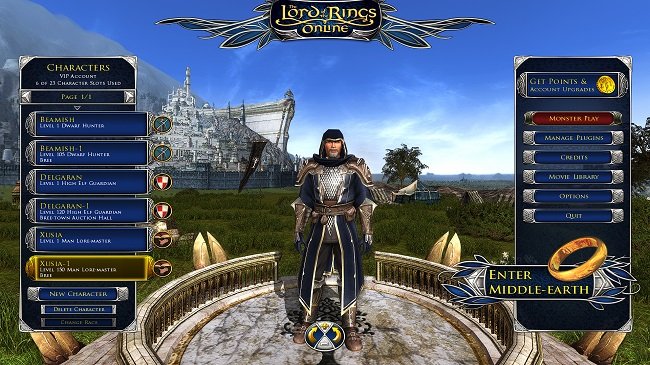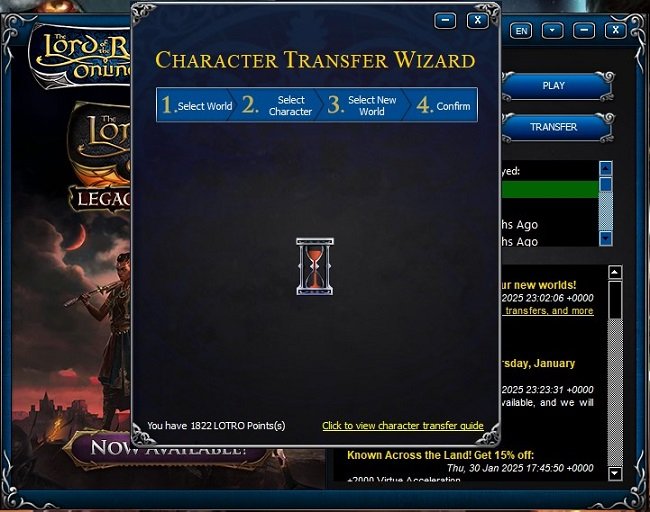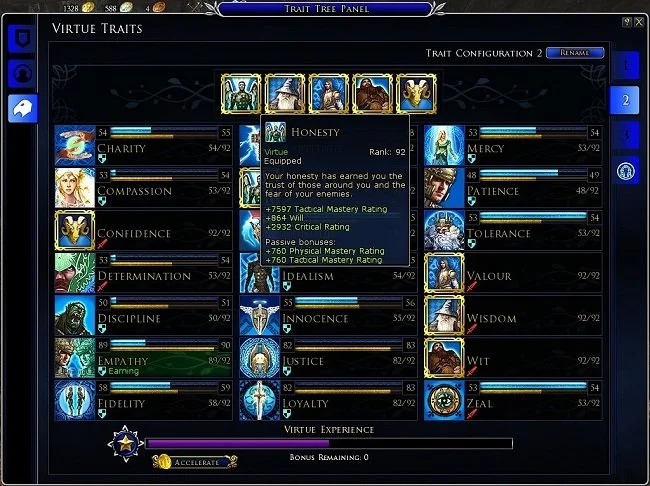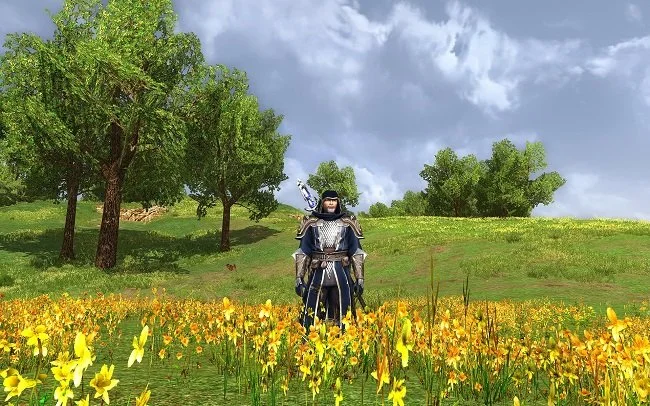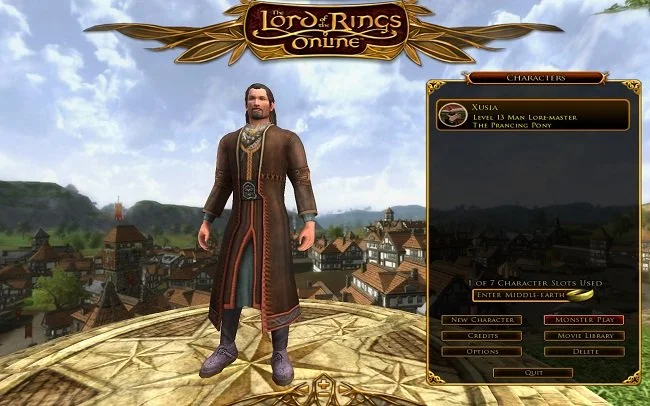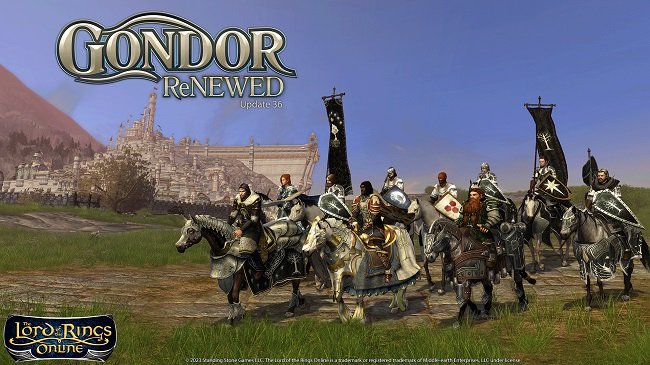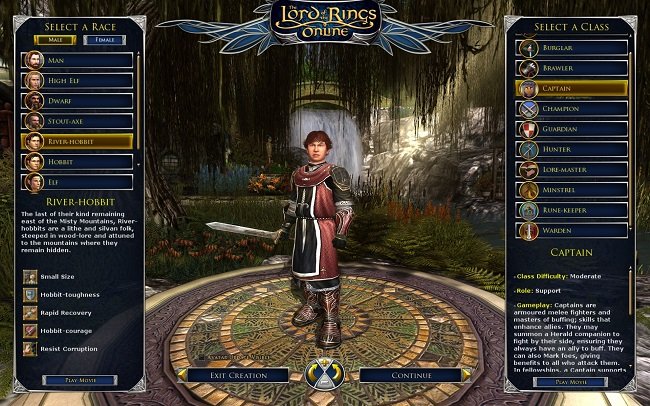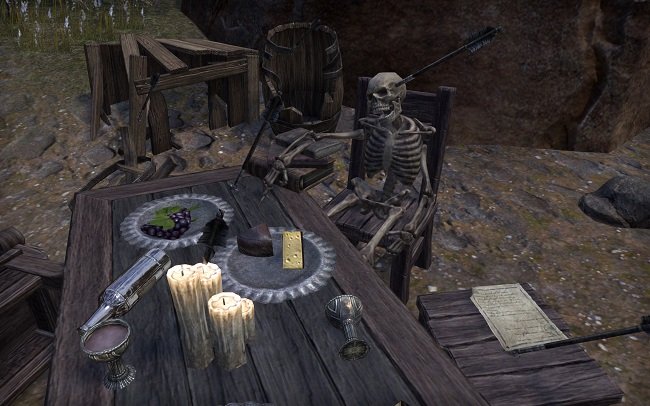The Geography of LOTRO: Part 3 Filling in the Gaps
I would like to once again return to the matter of the geography of Middle Earth. David Braben, co-creator of seminal video game Elite, called truly open-ended game design and sandbox gaming environments "The Holy Grail" of modern video gaming. He cited games like Elite and the Grand Theft Auto series as early steps in that direction. For many gamers, the idea of being able to freely roam a virtual world without any deliberate restrictions is a very enticing one. For Tolkien fans, the notion of being given complete freedom of movement throughout Middle Earth would be a dream come true. However, due to the way that LOTRO has been designed, Standing Stone Games vision of Middle Earth, although well-conceived is not such an environment.
The latest stable map for LOTRO shows all the various regions that currently feature in the game. Furthermore, the map highlights a significant amount of Middle-earth that does not at present exist within the MMORPG. This includes areas in Eriador such as The Grey Havens, The South Farthing and Tharbad. When looking across the Misty Mountains to Rhovanion, even more noteworthy locations are conspicuously absent. Esgaroth, Mount Gundabad and The Iron Hills spring to mind. Until recently, LOTRO players and Tolkien aficionados have just written off these missing territories. Their omission is due to the realities of developing an MMO, set in a vast Lore filled world. However, more recently new developers Standing Stone Games have indicated that they have a game plan beyond the scope of the book and that there is a possibility of many “blanks” being filled in at a later date.
In the past, Turbine have taken a very practical approach to the way they have developed Middle Earth. The areas that have been included are all there to underpin the story. Regional quest hubs facilitate players advancement, then migrate them to new locations via the narrative. The game mechanic is heavily orientated towards playing through certain areas at specific levels. Simply put, any part of Middle Earth that does not have any relevance to the ongoing epic storyline has been somewhat ignored. Although, there are plenty of explorer deeds to be completed in each area, Turbine never really intended to make the game weighted towards players who simply wished to wander through Middle Earth. Due to the levelling mechanic and region phasing, you cannot simply travel from Ered Luin to Mirkwood just exploring.
Despite these restriction, there is still much to see in LOTRO and clearing regional quest is no guarantee of seeing all that Middle Earth has to offer. If you have a curious nature there are still many nooks and crannies to explore and little embellishments that the developers have added through their love of the source text. There are also scattered around Middle Earth, hidden villages that were created in the early devlopement of the game which were then removed from the final release. In the early days of LOTRO these could still be accessed but it would appear that Turbine have sealed these off now. One example was the hidden Hobbit villages, West of the Shire. There was another on the Western bank of Lake Evendim.
With LOTRO’s increased focus on themed festivals such as Winter-home and new events such as the treasure hunt, there is an opportunity to utilise these vacant areas of Middle Earth. Frostbluff for example seems to be located between Northern Ered Luin and Western Forochel. Furthermore the appearance of new locations and settlements can often now be spotted in advance of these areas being made available. Northcottons farms and Stoneheights were both copiously documented and discussed prior to Update 2 going live.
Although I very much enjoy the world that Turbine, now Standing Stone Games has created, I still find it a little saddening that there are some locations in Middle Earth that I cannot get a chance to visit and discover at present. For instance I would very much like to visit the Elf Towers to the West of The Shire. Whenever I am confronted with a barrier, be it a gate, a convenient range of mountains or cliff face, I always try to look beyond it. I am always curious to know how much landmass the developers actually created. I recently travelled to the South Farthing gate and by adjusting the camera perspective tried to see as much as what was beyond it. The view is very tantalising. In a true sandbox environment the road beyond would ultimately wind a path all the way down to Enedwaith.
As a gamer, I would like to see an MMO that allowed a player to choose a non-combat class and to simply be able to travel, explore, trade and move on again. It would be engaging to find quests and deeds specifically created around such characters, out in the wider world. Placing items or information in obscure locations could be an interesting game mechanic. Obviously, with a game such as LOTRO that now has an established methodology, the likelihood of adapting this may well be impossible , even if the developers were in favour of it. However, despite the restrictions that exist Standing Stone Games vision of Middle Earth still lends itself to a degree of exploration. New events can potentially open up the world. Narrative freedom beyond the end of text, offers even further opportunity. I think that in the years to come we may yet see many of these missing areas coming to life.

